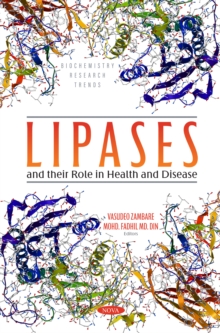
Micronucleus Assay: An Overview PDF
Edited by Robert C. Cole
Part of the Biochemistry Research Trends series
Description
Micronucleus is defined as the small nucleus that forms whenever a chromosome or its fragment is not incorporated into one of the daughter nuclei during cell division.
It is concluded that micronucleus assay can be used for risk prediction, screening, diagnosis and treatment of various chronic diseases.
In this Micronucleus Assay: An Overview, the applications of micronucleus assay will be discussed.
Ionizating radiations, ultraviolet rays, geogenic or anthropogenic pollutants can induce mutagenic, teratogenic or carcinogenic effects due to the induction of micro or macrolession over DNA.
Several models have been used to measure the mutagenic and clastogenic effect of such agents.
As such, the authors focus on one of these models: the micronucleus test.
The micronucleus test can assess abnormalities earlier in the drug discovery pipeline, making structure/genotoxicity connection a possible system for drug characterization.
Additionally, the authors provide knowledge about micronucleus assay and its usage in occupational toxicology studies.
It is now recognized as one of the most successful and reliable assays for genotoxic carcinogens.
The authors go on to present an overview of the evaluation of micronucleus assay by flow cytometry, reviewing the studies published in the international literature so far that employ different experimental designs for a variety of purposes.
Humans can become exposed to a variety of chemical substances that can have adverse biological effects, and the sub-lethal genotoxicity can have the most far reaching and severe consequences like cancer or abnormal progeny as per the cell type involved.
Hence, the penultimate chapter focuses on the significance of identifying and predicting potential genotoxic agents by using laboratory markers, thus regulating and preventing exposure to cancer causing agents.
In the concluding review, generation of micronucleus assay in the bone marrow cells of mice induced by various clastogenic chemicals, drugs, and radiation are elaborately elucidated.
Bone marrow cells are easily susceptible to oxidative damage and sensitive to various clastogenic as well as aneugenic agents.
Information
-
Download - Immediately Available
- Format:PDF
- Pages:182 pages
- Publisher:Nova Science Publishers, Inc.
- Publication Date:20/12/2019
- Category:
- ISBN:9781536166798
Information
-
Download - Immediately Available
- Format:PDF
- Pages:182 pages
- Publisher:Nova Science Publishers, Inc.
- Publication Date:20/12/2019
- Category:
- ISBN:9781536166798










